Cycle Support
Original price was: 89,90€.69,90€Current price is: 69,90€.
Description
It has been long known that anabolic steroids and, in more cases, oral anabolic steroids has a profound effect on general health. This often time takes a toll on your body cycle after cycle if it is not taken care of. Anabolic Innovations set out to solve this problem, but in a way that everyone could not only afford but could also appreciate, with effective dosages and a give-it-all-you-got mentality.
The ingredients in Anabolic Innovations Cycle Support have been carefully reviewed and backed up by countless studies (which will be added to the bottom of this writeup). Instead of putting in only basic ingredients we have taken it to the next level and gone above and beyond what is added by most supplement companies offering only minor protection/support and put in large doses and special ingredients that other companies don’t offer.
Milk Thistle Extract (standardized 80% Silymarin) Milk thistle nutritionally supports the liver’s ability to maintain normal liver function. It has shown positive effects in treating nearly every known form of liver disease, including cirrhosis, hepatitis, necroses, and liver damage due to drug and alcohol abuse. Milk thistle works due to its ability to inhibit the factors responsible for liver damage, coupled with the fact it stimulates production of new liver cells to replace old damaged ones.
Milk thistle has been proven to protect the liver from damage. The detrimental effects of environmental toxins, alcohol, drugs and chemotherapy may be countered with this valuable herb. The active chemical component in the herb is silybin, which functions as an antioxidant and is one of the most potent liver protective agents known. Clinical trials have proven silybin to be effective in treating chronic liver diseases and in protecting the liver from toxic chemicals. An injection of silybin is a proven antidote for poisoning with the Deathcap mushroom (Amanita phalloides).
Silybin is a part of the chemical structure of the flavoligan silymarine. Milk thistle’s hepatoprotective effects may be explained by its function of altering the liver cell membrane structure, blocking the absorption of toxins into the cells. Hepatoprotection by silymarin can also be attributed to its ability to increase the intracellular concentration of glutathione, a substance required for detoxicating reactions in liver cells. Milk thistle is also an antioxidant that is more potent than vitamins C and E.
One animal study found that silymarin (an active compound in milk thistle) worked as effectively as the cholesterol-lowering drug probucol, with the additional benefit of substantially increasing HDL (“good”) cholesterol. Further studies in people are needed.
NAC
Produced by the body, N-acetylcysteine (commonly called NAC) is a form of the amino acid cysteine. Because it enhances the production of the enzyme glutathione, one of the body’s powerhouse antioxidants, NAC can both stave off disease and play an important role in boosting the immune system. Studies have shown that glutathione levels are often reduced in people with certain conditions related to the immune system.
For more than three decades, NAC has been used as a mucolytic (“mucus dissolving”) agent to help break up the thick mucus often present in people suffering from chronic respiratory ailments. When administered intravenously, NAC has also proved invaluable in the treatment of acetaminophen overdose; it appears to protect the liver from this potentially toxic substance. Now widely available in supplement form, NAC is currently being recommended for preventing and treating a wide variety of ailments that may respond to its antioxidant properties. 3
Hawthorn Berry Extract (2% cratagic acid, 5% flavonoid glycosides)
Hawthorne Berries have been used since the 19th century to support the heart, and to normalize cardiovascular functions. Today, Hawthorne Berries are one of the most popular herbs used in Europe, and gaining wider acceptance in the United States. Primary chemical constituents of this herb include Vitamin C, flavonoids (quercetin, quercetrin), glycosides, proanthocyanidins, anthocynaidins, saponins, tannins, and cratetegin (most prevalent in the flowers, then leaves, then berries).
Hawthorne Berries appear to work best when taken as a preventative herb, possibly helping reduce the risk of cardiovascular disease. With its high content of bioflavonoids, Hawthorne Berries best support the heart. Hawthorne increases the body’s ability to utilize oxygen, and the heart’s ability to utilize calcium. This herb can actually help regulate both high and low blood pressure, in addition to slowly breaking down cholesterol and fat deposits in the body. The bioflavonoids help strengthen the contractive force of the heart, and gently dilate & relax the coronary blood vessels, improving overall circulation. For this reason, Hawthorne Berries have been used to lower high blood pressure & high cholesterol, as well as increase low blood pressure.
When used to support weight loss programs, Hawthorne Berries help reduce water retention by expelling excess salt from the body. This botanical has also been known to reduce nervous tension, alleviate insomnia and aid digestion. Hawthorne can also be used to strengthen joint lining, collagen and spinal discs.
Policosonol
Heart attack and stroke have been associated with high levels of a type of cholesterol known as low-density lipoprotein (LDL) (“bad” cholesterol) and low levels of high-density lipoprotein (HDL) (“good” cholesterol). Reversing these trends can lower the risk for these and other artery-related diseases.
Policosanol is a dietary supplement that can normalize cholesterol as well or better than drugs, without side effects. Efficacy and safety have been proven in numerous clinical trials, and it has been used by millions of people in other countries. Policosanol lowers LDL-cholesterol and raises protective HDL-cholesterol. This compares favorably with cholesterol-lowering drugs which have the drawback of side effects such as liver dysfunction and muscle atrophy. Policosanol is free of these side effects.
What makes policosanol exciting is that it has other actions against heart disease in addition to lowering cholesterol. Like statin drugs, policosanol helps stop the formation of artery lesions. This was proven in studies on rabbits fed a diet designed to create high cholesterol.
One of policosanol’s important actions is to inhibit the oxidation of LDL. Oxidized LDL is dangerous. It promotes the destruction of blood vessels by creating a chronic inflammatory response. Oxidized LDL can also provoke metalloproteinase enzymes. These enzymes promote blood vessel destruction, partly by interfering with HDL’s protective effect. Studies show that rats treated with policosanol have fewer foam cells, reflecting less inflammatory response causing less blood vessel destruction.
Another action of policosanol is to reduce the proliferation of cells on the lining of the arteries. Healthy arteries are lined with a smooth layer of cells so that blood can race through with no resistance. One of the features of diseased arteries is that this layer becomes thick and overgrown with cells. As the artery narrows, blood flow slows down or is blocked completely. Policosanol was tested for its ability to stop the proliferation of these cells. According to the results, policosanol’s ability to stop cell overgrowth “is in agreement with the antiproliferative effects reported for other lipid-lowering drugs, such as most of the statins.”
Policosanol also inhibits the formation of clots, and may work synergistically with aspirin in this respect. In a comparison of aspirin and policosanol, aspirin was better at reducing one type of platelet aggregation (clumping together of blood cells). But policosanol was better at inhibiting another type. Together, policosanol and aspirin worked better than either alone. A related effect is that significant reductions in the level of thromboxane occur in humans after two weeks of policosanol. Thromboxane is a blood vessel-constricting agent that contributes to abnormal platelet aggregation that can cause a heart attack or stroke. 5
Celery Seed Extract (Standardized 3nB)
Throughout much of history, celery and celery seed has been used primarily as a homeopathic and medicinal herbs. Not until relatively recent history has celery been used for culinary purposes. The flavor of celery is somewhat herbal and astringent, but it has a succulent, crisp texture. Because of its low-calorie count, celery is a favorite diet food
Celery seeds are mainly used in connection with rheumatism, arthritis, and gout. They are especially useful in rheumatoid arthritis where there is an associated mental depression. Additional benefits of celery seed may include the following:
Lowers Blood Pressure and Cholesterol?- In one study, at the University of Chicago, lab animals who were given a daily dose of a compound extracted from celery seed experienced a 12 percent reduction in their blood pressure over a four-week period. The same study indicated it may reduce artery-clogging cholesterol. A traditional Vietnamese remedy for high blood pressure.
Healthy Joints? – celery has been used and suggested as an alternative therapy for arthritis, rheumatism, and gout. Celery seed is most often taken to aid in the maintenance of healthy joints. Celery seeds have been found to have anti-inflammatory properties that reduce swelling and pain around the joints. It is suitable for anyone who wishes to reduce the degeneration of body joints that commonly occurs with age. Celery seed can also ease joint discomfort that occurs due to inflammation and is, in fact, used for the relief of symptoms of conditions such as arthritis.
Antiseptic Properties? – Celery seed has an antiseptic property that makes it useful to the health of the urinary tract and a diuretic property to help relieve fluid retention. Celery seed aids in the elimination of uric acid. These properties can prove useful in cases of bladder disorders, cystitis, and kidney disorders. Celery seed helps with urinary tract infection in women.
Acts as A Diuretic?- The herb contains a diuretic substance that also benefits arthritis and gout patients, as it helps to flush away the uric acid crystals that build up around the joints. Celery helps shed water weight.
Anxiety?- Celery seed can help soothe the nerves and relieve pain.
Aids Digestion? – Consuming celery seed in food also aids in the digestion of protein.
Cancer Agents?- Contains eight different families of anti-cancer compounds, such as phthalides and polyacetylenes, that detoxify carcinogens, present in high concentrations in cigarette smoke. 6
Idebenone Idebenone is an analog of the very popular CoQ10. In most respects, Idebenone shares its traits with Coenzyme Q10 and like Coenzyme Q10 is might be useful for aging. It differs from it in some important ways, which may make it more useful. Under certain circumstances, Coenzyme Q10 (CoQ10) may become a pro-oxidant. These circumstances are conditions in which hypoxia or lack of oxygen occurs.
In cases of shock, heart attack, stroke, or poor circulation, CoQ10 auto-oxidizes and unleashes massive amounts of various free radicals that damage delicate tissues and because CoQ10 is necessary for electron transport and ATP (chemical energy) production, cellular death may ensue. Idebenone, on the other hand, suppresses free radicals and continues ATP production in hypoxic situations. This may make it a useful supplement for individuals at risk for those conditions.
Other important traits of Idebenone not shared by CoQ10 include the ability to raise the brain’s serotonin levels like the SSRI antidepressants (Prozac) and it also increases the brain levels of nerve growth factor. Another trait is to protect the myelin sheath from damage as well as the mitochondria that has important implications in Multiple Sclerosis. The ability to enhance serotonin production occurs even under less than optimal conditions such as those whose diet contains little L-Tryptophan.
Naturally, nerve growth is a desired result in many conditions. In Alzheimer’s Disease, for example, several studies show dose dependent improvements when compared to placebo as measured by different tests when taking Idebenone. An abstract said, “Treatment with idebenone was found effective on memory, attention, and orientation and in slowing down the natural progressive worsening of the disease.”
The following conditions may benefit from Idebenone: Brain enhancement as a nootropic, stroke, Alzheimer’s, dementia, surgical candidates, cardiovascular, MS, other demyelination conditions, aging, depression, Friedreich’s Ataxia, and liver problems.7
Saw Palmetto Extract (>45% fatty acid European pharmaceutical grade powder) Saw Palmetto is a small, palm-like plant native to North America. Native Americans and early American settlers used the berries to treat problems associated with the genitals, urinary tract and reproductive system. This herb is called the “plant catheter” due to its therapeutic effect on the neck of the bladder and the prostate in men. Saw Palmetto is widely used in Germany, Canada, the United Kingdom and now the U.S. for nutritionally benefiting the prostate and urinary tract. It has been marketed as an aphrodisiac for both men and women.
The active constituents are volatile oil, steroidal saponin, tannins, and polysaccharides. Saw Palmetto is a tonic, and is one of the few herbal remedies that are considered to be anabolic – it strengthens and builds body tissues.
For men it treats an enlarged and weakened prostate gland. It has shown significant action in treatment of conditions associated with benign prostatic hypertrophy (BPH). Saw palmetto extract works to prevent testosterone from converting into dihydrotestosterone, the hormone thought to cause prostrate cells to multiply, leading to an enlarged prostate. It is chiefly used as a diuretic and to tone the bladder by improving urinary flow, and relieving strain. Regular use of saw palmetto may decrease urinary frequency, especially during the night, by allowing complete bladder expulsion and reducing inflammation of the bladder and enlarged prostrate.
Saw palmetto inhibits androgen and estrogen receptor activity and may be beneficial for both sexes in balancing the hormones. Because of it hormonal effects it can aid the thyroid in regulating sexual development and normalizing activity of those glands and organs. Women have used the herb to stimulate breast enlargement and lactation as well as treating ovarian and uterine irritability. It has been prescribed for reduced or absent sex drive, impotence and frigidity. Because of its potential hormonal effects, pregnant women should not use it. The berries have been recommended in treatment of diseases that deprive the body of strength and growth. Preliminary evidence exists to also suggest saw palmetto may also aid those suffering from thyroid deficiency. Saw palmetto is a good expectorant for use in clearing chest congestion and can be used to treat coughs, asthma, and bronchitis.
It has also been used to stimulate appetite, improve digestion, nourish the nervous system and increase the assimilation of nutrients to the body. The berries have long held a reputation as sexual stimulants and aphrodisiacs. The largest use today is as a supplement for reducing enlarged prostate glands, treating urinary tract problems and for improving body strength.8
Nettle Root (10:1 Urtica dioica)
The roots of stinging nettle may be used to relieve the symptoms of benign prostatic hyperplasia (BPH) — a non-cancerous enlargement of the prostate gland. The prostate is part of the male reproductive system. The urethra, the tube that carries urine out of the body, passes through the prostate gland. For most men, BPH is a normal part of aging. An enlarged prostate may cause men to have trouble starting or maintaining urination, need to urinate more often, have urine leaks, or need to urinate during the night. Stinging nettle root contains chemicals that may prevent or delay the growth of prostate cells by interfering with an enzyme. In several studies, nettle root products have shown general effectiveness for relieving the symptoms of BPH. Frequently, it is included with other herbals such as pygeum and saw palmetto in “Prostate Formulas”. It has also been known to reduce the levels of serum Sex Hormone Binding Globulin, which binds to testosterone in the blood and renders it inactive.
Nettle root is also being studied for potential anti-inflammatory and blood pressure lowering effects. In studies of laboratory animals, nettle root extract seemed to reduce artificially-produced inflammation. How it worked is not known. Results from other laboratory studies may show that nettle root may relax blood vessels and stabilize the force of heartbeats. Both of these effects may contribute to lowering blood pressure. All these possible effects need further study, however.9
Beta-Sitosterol
As one of several phytosterols, plant compounds with chemical structures similar to that of cholesterol, beta-sitosterol is commonly found in foods such as wheat germ, soybeans, and corn oil. Over the past few years, concentrated extracts of this particular phytosterol have been tested for lowering cholesterol and lessening such discomforts of benign prostatic hyperplasia (BPH) as frequent and painful urination.
Beta-sitosterol appears to reduce cholesterol levels by blocking absorption of cholesterol. A review of several double-blind studies designed to test the efficacy of beta-sitosterol in men with symptomatic benign prostatic hyperplasia showed that the phytosterol (beta-sitostero) significantly improved urological symptoms and flow measure in study participants.
Other purported benefits of Beta-sitosterol include boosting immunity and normalizing blood sugar, relieving inflammation, healing ulcers, enhancing uterine tone, and alleviating cramps. However, these health benefits of beta-sitosterol have not been substantiated by scientific evidence.
180g
Directions:
As a dietary supplement, take one (1) scoop in the morning and one (1) scoop in the evening.
Additional Information
|
||||||||||||||||||||||||||||||||||||||||||
You must be logged in to post a review.

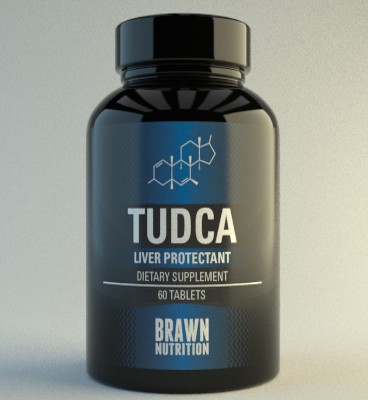
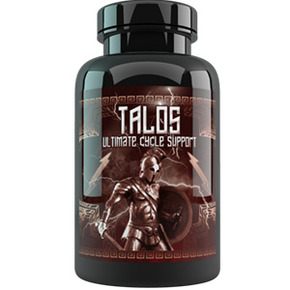
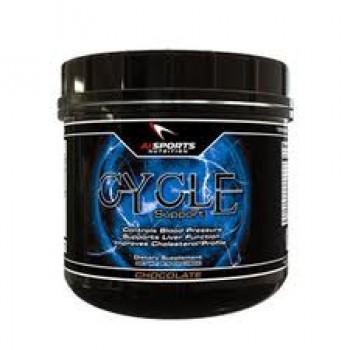
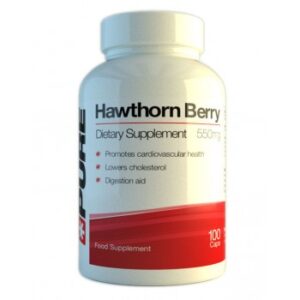
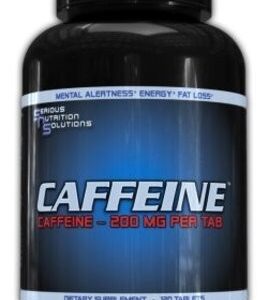
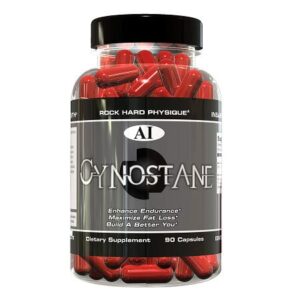
Reviews
There are no reviews yet.